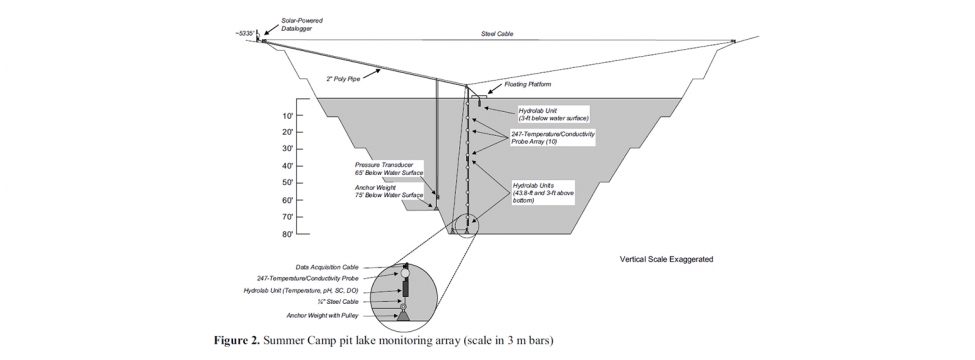To serve you better, our new website displays information specific to your location.
Please visit the site and bookmark it for future use.
The Limnology of Summer Camp Pit Lake: A Case Study
Author(s):
Jeff Parshley, Rob Bowell
Date:
Monday, December 1, 2003
First presented:
Mine Water and the Environment - December 2003
Media:
Type:
Article
Category:
Geochemistry
Surface water bodies are expected to form in several pits at the Getchell Open Pit Mine after mining has ceased due to inflowing surface and ground water. Predicting the long-term geochemical behavior of the pit water is important in assessing potential environmental effects. One of the pits, the Summer Camp Pit, began to develop a pit lake in 1991 when dewatering ceased and the pit was used to store water pumped from underground operations. This provided a field-scale opportunity to identify the controls on lake water chemistry and determine the effects of seasonal mixing events on long-term chemical behavior. During a five-year period (1996- 2001), a number of physical, chemical and mineralogical characteristics of the lake were monitored with the intent of using this information as a basis for predicting long-term geochemical behavior of future lakes in the other pits. Seasonal and multiyear cycles were identified within the water column. These cycles were influenced by climatic changes and element and sediment loadings of inflow to the lake. Stratification occurred, with the metalimnion or active layer of the lake evolving from a low total dissolved solids (TDS), alkaline water to a high TDS, neutral to mildly acidic water, until turnover occurred due to density variations between the metalimnion and epilimnion, completely mixing the layers. A hypolimnion that formed has the potential to stabilize metals in the basal sediments as sulfide minerals below a chemolimnion in the lake. Longer-term events also appear to involve the hypolimnion.
The monitoring program demonstrated the dynamic nature of a pit lake and how the complex limnology can affect seasonal water quality. Such considerations are important in interpreting water quality from pit lakes and in selecting monitoring data to use when constructing mathematical models for predicting changes in water quality.



